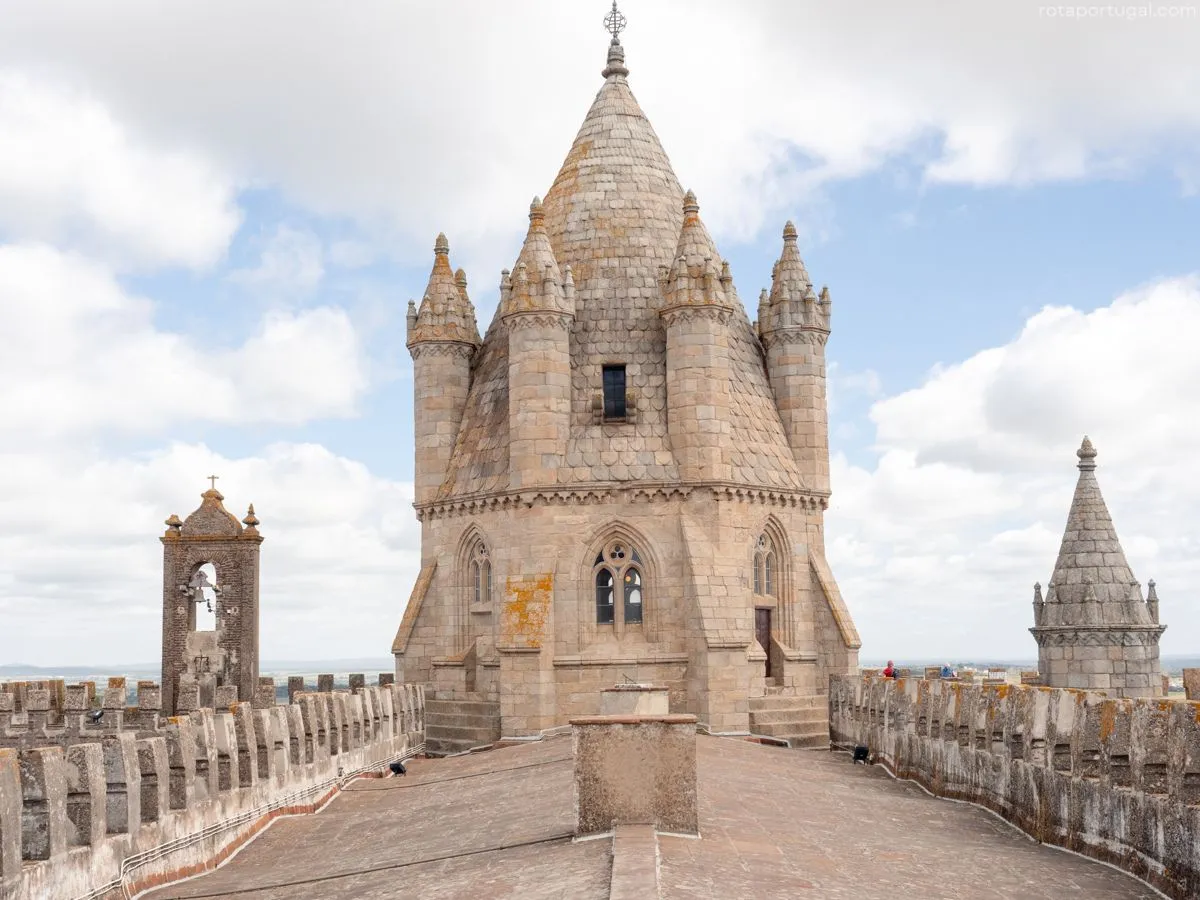Évora, located in the heart of Portugal’s Alentejo region, is a city that seriously captures the essence of Portuguese heritage and culture.
Évora’s rich history spans over two thousand years, visible in its well-preserved old town, itself a UNESCO World Heritage Site. Evora is a mosaic of Roman, Gothic, and Baroque influences, making it a fascinating destination for history buffs and cultural enthusiasts alike. Similarly, it’s the capital of a brilliant wine region, and an excellent place to try some traditional Portuguese food that is not always available outside the region.
Whether you’re visiting Évora as a day trip or planning an extended stay, Evora is well worth exploring!
Evora’s Brief History
Evora’s past is woven from various civilizations. The city was originally known as Ebora by the Celts, it was later developed by the Romans, evident in the ruins like the Templo de Diana. The city flourished under the Moors and later during the Portuguese Golden Age when it became a royal residence. Each era left a distinctive mark on Evora, creating a unique blend of architectural styles and cultural influences.
The Top 10 Things to See and Do in Evora in 2024
1. Templo de Diana: The Roman Temple of Diana is a magnificent symbol of Evora’s ancient past. Although Roman in origin, the temple was continually developed all the way up until the 1930s when it was again uncovered. If you can find some past photos, it’s fascinating.
2. Evora Cathedral (Sé de Evora): A stunning example of Gothic architecture, the cathedral also incorporates Romanesque and Baroque elements. Its rooftop offers panoramic views of the city and the surrounding countryside.
3. Capela dos Ossos: Located inside the Church of St. Francis, this eerie Chapel of Bones is decorated with the skulls and bones of over 5,000 monks. It’s not really spooky, but reflective in natura, and is a fascinating glimpse into past lives.
4. São Francisco Church: Known for its mix of Gothic and Manueline architecture, this church is a testament to Evora’s rich religious and architectural history.
5. Evora Museum: Housed in the former Episcopal Palace, this museum boasts an extensive collection of regional artifacts, including Roman relics and medieval art. If you want to go deep into Évora’s history, here is the place to do it.
6. Giraldo Square (Praça do Giraldo): The main square of Evora, named after the city’s hero, Giraldo the Fearless. The square is surrounded by local cafes, bars and restaurants. Serving as a lively central hub for locals and tourists. The streets around the square are great for shopping too!
7. Evora University: One of Portugal’s oldest universities, its grand architecture and history are worth exploring and tickets only cost €3. You can explore many areas including the Renaissance cloisters.
8. Public Garden of Evora (Jardim Público de Évora): A great spot to unwind or even be social at one of its quiosques. This large, open park combines natural beauty with historical elements, including some remnants of the old city walls.
9. Evora Aqueduct: Stretching into the city, the Aqueduct of Silver Water (Aqueduto da Água de Prata) is a remarkable feat of engineering from the 16th century. You’ll even find several buildings built into its historic arches!
10. Almendres Cromlech: A short drive from Evora (around 15km), this megalithic complex is one of the largest in Europe, providing a unique glimpse into prehistoric times. It’s a fascinating place to explore and also get to know some of the cork forests that are in the countryside around Evora.

Évora’s Top Festivals and Events:
Dia de São Pedro (St Peter’s Day) – On the 29th June each year is St Peter’s day, it’s a municipal holiday in Évora so you can expect fun and a lively atmosphere.
Feira de São João (June): For over 500 years Feira de São João has been celebrated in Évora. It’s Evora’s biggest festival, featuring concerts, parades, and traditional food.
Evora Classical Music Festival (Usually in July): A celebration of classical music, with performances in various historic venues around the city.
What to Expect from Évora:
Evora exudes a sense of timeless charm, that the Alentejo is famous for. The city’s compact size makes it perfect for walking, with each street offering a new historical discovery. From the haunting Capela dos Ossos to the imposing Cathedral, the city is a treasure trove for those interested in history and architecture.
The cuisine in Evora is deeply rooted in Alentejo traditions, offering hearty, rustic flavors that are a delight – the famed black pork (porco preto) is a must try in the region. As are the Alentejo’s robust red wines. Évora is a great place to explore this, while taking the time to enjoy the region slowly.
How to Get to Évora
Evora is well-connected by road and rail, making it easily accessible from Lisbon and other major cities in Portugal. The drive from Lisbon takes about 1.5 hours, offering a scenic route into the heart of Alentejo.
The Linha do Alentejo connects Évora to Lisbon by rail, and takes roughly an 1 hour and 40 minutes. Prices start around €13,35 for a second class ticket on the train, with discounts available for children, students and seniors. Alternatively, coaches are available from Lisbon, and Faro as well.
Best Times to Visit Évora
Spring (March to May) and autumn (September to October) are the best times for visiting Evora, offering mild weather and fewer tourists. Summer can be quite hot (peaking above 40 degrees) so be aware if you’re planning a trip to this region during the summer months. The winter is usually mild and you can expect bright sunny days as well!
Will You Be Visiting Evora Soon?
